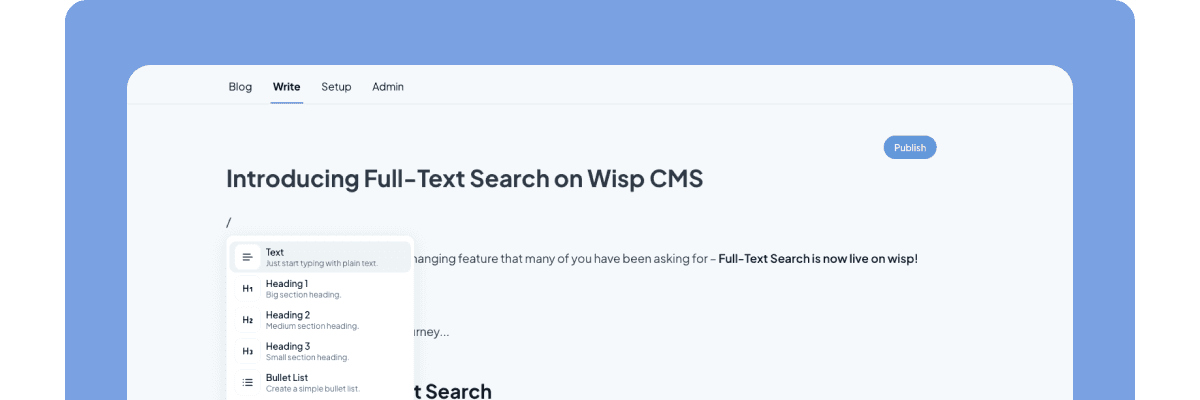 You've set up your authentication system in Next.js, but now users are seeing flashes of protected content before redirects kick in, or even worse - they're getting unexpectedly logged out because cookies aren't being properly handled. If you're debugging cookie race conditions and redirect loops instead of building features, you're not alone.
You've set up your authentication system in Next.js, but now users are seeing flashes of protected content before redirects kick in, or even worse - they're getting unexpectedly logged out because cookies aren't being properly handled. If you're debugging cookie race conditions and redirect loops instead of building features, you're not alone.
Authentication redirects in Next.js might seem straightforward, but they're filled with nuanced timing issues and framework-specific quirks that can drive even experienced developers to frustration.
Understanding the Authentication Flow Challenge
When implementing authentication in Next.js applications, the flow typically involves:
User submits login credentials
Server validates credentials and generates a token
Token is stored (usually in a cookie)
User is redirected to a protected route
This seems simple enough, but in practice, many developers encounter a critical issue:
"The redirect to the homepage happens before the cookie is fully set/available."
This timing mismatch creates what developers call a "cookie race condition" - where the application attempts to verify authentication using a cookie that hasn't been properly set yet, resulting in users being incorrectly redirected back to login pages or experiencing authentication failures.
Browser vs. Next.js Redirects: Making the Right Choice
When handling post-authentication redirects, you have two primary options:
Browser-Based Redirects
Using client-side navigation via window.location.href or React hooks:
// Client component
'use client';
import { useRouter } from 'next/navigation';
export default function LoginForm() {
const router = useRouter();
async function handleLogin(e) {
e.preventDefault();
const response = await fetch('/api/auth/login', {
method: 'POST',
// form data
});
if (response.ok) {
// Client-side redirect after authentication
router.push('/dashboard');
}
}
// Form JSX...
}
Pros:
Simple implementation
Works well for SPA-like experiences
Cons:
Can create the dreaded "flash of content" problem
May not properly wait for cookies to be set
Less secure for sensitive redirections
Next.js Server-Side Redirects
Using server components, middleware, or API routes:
// Server component or API route
import { redirect } from 'next/navigation';
import { cookies } from 'next/headers';
export async function POST(request) {
const { username, password } = await request.json();
// Authentication logic...
// Set the session cookie
cookies().set({
name: 'session',
value: token,
httpOnly: true,
secure: process.env.NODE_ENV === 'production',
sameSite: 'strict',
maxAge: 3600 // 1 hour
});
// Server-side redirect after setting cookie
redirect('/dashboard');
}
Pros:
More secure handling of sensitive redirects
Better coordination with cookie setting
Prevents unwanted content flashes
Cons:
More complex implementation
May require additional server-side logic
The key insight here is that server-side redirects provide better synchronization with cookie operations, making them the preferred choice for authentication flows in Next.js.
Cookie Management During Authentication Flows
The Cookie Race Condition Problem
One of the most common issues developers face is what the community calls a "cookie race condition":
"Can't set a cookie and read a cookie in the same request. Reload the page after setting."
This occurs because:
The server sets an authentication cookie in the response headers
The application immediately tries to read this cookie to verify authentication
The cookie hasn't been fully processed by the browser yet
Authentication check fails, causing unexpected behavior
Best Practices for Cookie Management
To avoid these issues, consider these practical solutions:
1. Two-Step Authentication FlowInstead of trying to set a cookie and immediately redirect based on its value:
// API route for login
export async function POST(request) {
// Authentication logic...
// Set the session cookie
cookies().set({
name: 'session',
value: token,
httpOnly: true,
// other cookie options...
});
// Return success response with token instead of redirecting
return Response.json({
success: true,
message: 'Authentication successful'
});
}
// Client component
'use client';
import { useState } from 'react';
import { useRouter } from 'next/navigation';
export default function LoginForm() {
const router = useRouter();
const [isLoading, setIsLoading] = useState(false);
async function handleLogin(e) {
e.preventDefault();
setIsLoading(true);
const response = await fetch('/api/auth/login', {
method: 'POST',
// form data...
});
if (response.ok) {
// Wait briefly to ensure cookie is set before redirecting
setTimeout(() => {
router.push('/dashboard');
}, 100);
} else {
setIsLoading(false);
// Handle error...
}
}
// Form JSX...
}
This approach separates the cookie setting from the redirect, giving the browser enough time to process the cookie.
2. Leverage Middleware for Authentication ChecksNext.js middleware runs before a request is completed, making it ideal for authentication checks:
// middleware.ts
import { NextResponse } from 'next/server';
import type { NextRequest } from 'next/server';
export function middleware(request: NextRequest) {
const sessionCookie = request.cookies.get('session')?.value;
// Protected routes pattern
const isProtectedRoute = request.nextUrl.pathname.startsWith('/dashboard') ||
request.nextUrl.pathname.startsWith('/profile');
// Public routes that should redirect if already authenticated
const isAuthRoute = request.nextUrl.pathname.startsWith('/login') ||
request.nextUrl.pathname.startsWith('/register');
// Protect routes that require authentication
if (isProtectedRoute && !sessionCookie) {
return NextResponse.redirect(new URL('/login', request.url));
}
// Redirect already authenticated users away from auth pages
if (isAuthRoute && sessionCookie) {
return NextResponse.redirect(new URL('/dashboard', request.url));
}
return NextResponse.next();
}
// Configure which routes use this middleware
export const config = {
matcher: [
'/dashboard/:path*',
'/profile/:path*',
'/login',
'/register'
],
};
An important note from community experience:
"The middleware applies also to requests to static content (for example files from `/_next`) and that prevents pages from loading correctly."
To avoid this issue, be specific with your middleware matchers as shown in the example above.
3. Use httpOnly Secure CookiesFor added security, always set proper attributes for authentication cookies:
cookies().set({
name: 'session',
value: jwtToken,
httpOnly: true, // Prevents JavaScript access
secure: true, // HTTPS only
sameSite: 'strict', // Prevents CSRF attacks
path: '/', // Available across the entire site
maxAge: 60 * 60 * 24 // 24 hours
});
The httpOnly flag is crucial for preventing XSS attacks, while secure ensures cookies are only sent over HTTPS connections.
Advanced Redirect Scenarios and Solutions
Handling Conditional Redirects Based on User State
A common requirement is redirecting users differently based on their account status:
"I'd really like to have the main `/` page to be either the dashboard OR the sign in page depending on the auth state."
The most elegant solution is using conditional parallel routes in Next.js:
// app/layout.js
import { getSession } from '@/lib/auth';
export default async function RootLayout({ children, dashboard, login }) {
const session = await getSession();
return (
<html lang="en">
<body>
{session ? dashboard : login}
</body>
</html>
);
}
With corresponding route files:
app/@dashboard/page.js- Protected dashboard contentapp/@login/page.js- Public login content
Avoiding the "Flash of Content" Problem
Many developers experience this frustrating issue:
"The user sees a flash of the account page before the redirect and it doesn't seem too smooth."
This typically happens when using useEffect for authentication checks and redirects. Instead:
Use server components for initial auth checks
Leverage middleware for route protection
Implement proper loading states for authentication transitions
// app/protected/page.js
import { redirect } from 'next/navigation';
import { getSession } from '@/lib/auth';
import ProtectedContent from '@/components/ProtectedContent';
export default async function ProtectedPage() {
const session = await getSession();
if (!session) {
redirect('/login');
}
return <ProtectedContent />;
}
Beware of Permanent Redirects During Development
A cautionary tale from the developer community:
"Permanent redirects are cached in the browser, you'll need to clear your browser's cache."
When configuring redirects in next.config.js, be careful with the permanent flag:
// next.config.js
module.exports = {
async redirects() {
return [
{
source: '/old-profile',
destination: '/profile',
permanent: false, // Use false during development
},
];
},
};
Using permanent: true (HTTP 308) causes browsers to cache the redirect. During development, use permanent: false (HTTP 307) to prevent caching issues.
Conclusion
Effectively managing redirects post-authentication in Next.js requires understanding the subtle interplay between cookies, server-side operations, and client-side navigation. By following these best practices:
Prefer server-side redirects for authentication flows
Implement proper cookie management with appropriate security attributes
Use middleware to protect routes and handle redirects consistently
Be mindful of timing issues between setting cookies and redirecting users
Apply conditional rendering techniques to avoid content flashes
You'll create a seamless, secure authentication experience that avoids the common pitfalls that frustrate both developers and users.
Remember that authentication is not just about verifying identity, but also about creating a smooth, intuitive experience that maintains security without compromising usability. With these techniques in your toolkit, you're well-equipped to implement robust authentication flows in your Next.js applications.



